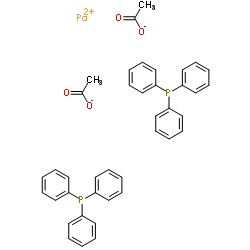| Structure | Name/CAS No. | Articles |
|---|---|---|
 |
Diacetatobis(triphenylphosphine) palladium(II)
CAS:14588-08-0 |
| Structure | Name/CAS No. | Articles |
|---|---|---|
 |
Diacetatobis(triphenylphosphine) palladium(II)
CAS:14588-08-0 |